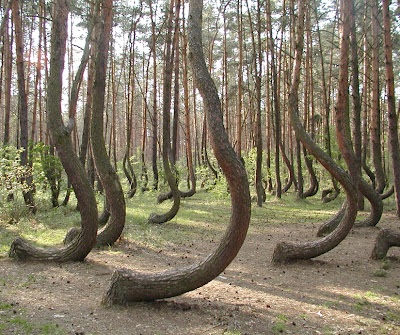Sunday, September 11, 2011
DIY: Make your own magnetic putty!
This instructable shows you how to make your very own magnetic putty... and it is really easy!
See all the steps: http://www.instructables.com/id/magnetic-silly-putty/
Then you can play with it:
Natural Works of Art - Sand under a Microscope
Sand is a fascinating substance and very different all over the world. It can be composed of the remnants of volcanic explosions, eroded mountains, dead organisms, and even degraded man-made structures. And examined closely enough, as the scientist and artist Gary Greenberg has, sand can reveal spectacular colors, shapes, and textures. See more at Discover Magazine here.
Taketomi Island, Okinawa, Japan
Looking like a puffy white star studded with little pearls, this is the shell of an amoeboid protist called a foraminifera, or foram. An estimated four thousand types of forams live in the world's oceans.
The shells, called tests, are made mainly of calcium carbonate, which the animals derive from carbon atoms in the air and water. Forams thus play a significant role in the carbon cycle. (Magnification 75x) [From Discover Magazine]
The shells, called tests, are made mainly of calcium carbonate, which the animals derive from carbon atoms in the air and water. Forams thus play a significant role in the carbon cycle. (Magnification 75x) [From Discover Magazine]
Plum Island, Massachusetts
Metamorphic minerals, which form at high temperatures and pressures underground, can become heavy, brightly colored sands like these. But color is often unreliable for identifying different types of sands.
Here, the pink and red grains are garnet, but garnet can also be brown, black, green, or orange, depending on the chemistry. The bright green epidote in the center can also be gray, brown, or nearly black. The angular, black magnetite--the most common naturally occurring magnetic material on earth--is always black, however, and is frequently found near garnet. (Magnification 95x) [From Discover Magazine]
Here, the pink and red grains are garnet, but garnet can also be brown, black, green, or orange, depending on the chemistry. The bright green epidote in the center can also be gray, brown, or nearly black. The angular, black magnetite--the most common naturally occurring magnetic material on earth--is always black, however, and is frequently found near garnet. (Magnification 95x) [From Discover Magazine]
Maui, Hawaii
Not all sand is made of tiny bits of rock. Biogenic sand, which forms from the remains of marine life, is the major ingredient of many tropical beaches. The grains here are tiny fragments of a baby sea urchin shell.
The raised bumps on the white grain represent the sites of insertion for the sea urchin's spines. The blue grain has eroded to the point that the raised bumps have been completely rubbed off. (Magnification 100x) [From Discover Magazine]
The raised bumps on the white grain represent the sites of insertion for the sea urchin's spines. The blue grain has eroded to the point that the raised bumps have been completely rubbed off. (Magnification 100x) [From Discover Magazine]
Wednesday, September 7, 2011
Amazing Photography: Dew-Covered Insects
Photographer Miroslaw Swietek took the magnificent macro photo of a dragonfly covered in dew. To see more incredible photos by Swietek go here.
12 Events That Will Change Everything
Scientific American has made an interactive animation to give a peek at the 12 EVENTS THAT WILL CHANGE EVERYTHING. Explore the animation here!
Crooked Forest
In western Poland, a forest of about 400 pine trees grow with a 90 degree bend at the base of their trunks AND --> all bent northward.
The trees were planted around 1930, and it is believed that they grew for 7-10 years before tree farmers used a mechanical device to hold the trees in the bent formation.
You can see more at the Discovery News site here.
The trees were planted around 1930, and it is believed that they grew for 7-10 years before tree farmers used a mechanical device to hold the trees in the bent formation.
You can see more at the Discovery News site here.
Subscribe to:
Comments (Atom)














